| |
|
The Going-to-the-Sun Road in Glacier National Park, Montana, opened for the new tourist season, June 14, 2025. After a lovely lunch at Whitefish Lodge on Whitefish Lake (celebrating Father’s Day a day late) with my son Steen and his partner Alex Hart (she and Steen had worked on Father’s Day), we left for nearby Glacier National Park and the Going-to-the-Sun Road to celebrate its annual opening. Since Alex had to work at Buchanans Chop House that evening, father and son journeyed to the Going-to-the-Sun Road.
| |
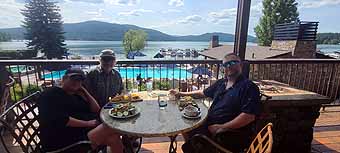 |
|
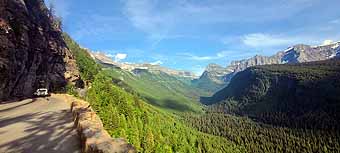 |
|
| |
Father's Day Lunch at Whitefish Lodge |
|
Going-to-the-Sun Road |
|
| |
|
|
|
|
| |
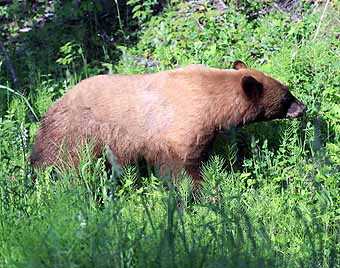 |
|
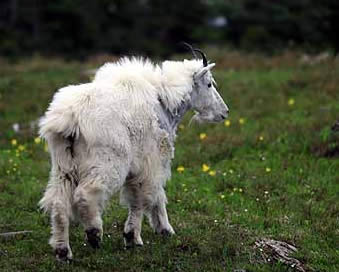 |
|
| |
Grizzly Bear |
|
Rocky Mountain goat |
|
The warm weather was welcoming as Steen chauffeured his dad all the way to Logan’s Pass and back to his Columbia Falls home. I was able to photograph from the passenger window and my first series of shots were of a grizzly bear foraging beside Lake McDonald...a fortuitous opening to a memorable day of immense scenery and a plethora of wildlife including bighorn sheep, marmots, deer, and birds—including a new one for my life list: Swainson’s thrush, with its flute-like sound.
The last two months had been memorable with fly fishing, rafting and exploring Montana’s Northwest corridor along with a several week foray to Washington’s Ocean Shores and Mount Rainier areas. At this writing moment, I have not been to my Oregon home since last September. I’ll depart July 1, and take a slow route home through Montana, Idaho, and Washington.
GOING TO THE SUN ROAD, GLACIER NATIONAL PARK, MONTANA
| |
After the grizzly encounter (it wandered by us just 15 feet away, then slipped into the forest), we made our way along Lake McDonald, past McDonald Lodge https://www.glaciernationalparklodges
.com
/lodging/lake-mcdonald-lodge/ to Avalanche Creek and the Trail of the Cedars where the gate had been opened earlier in the day, allowing access to the Going-to-the-Sun Road all the way to St. Mary on the eastern edge of the fabled park. At this later hour, the traffic was tenable. Considerably more vehicles were exiting than were entering. |
|
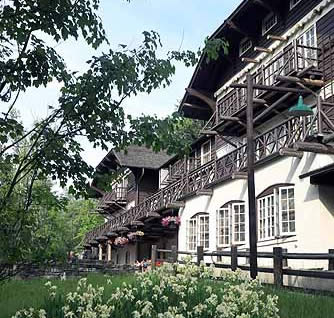 |
|
| |
|
|
McDonald Lodge |
|
Canada's Waterton Lakes National Park and the United States’ Glacier National Park, both on the Canada/US border, were combined into Waterton-Glacier International Peace Park in 1932 to commemorate the goodwill and peace along the world’s longest undefended border. Both are designated World Heritage Sites and Biosphere Reserves. In 2016, they became the world’s first transboundary International Dark Sky Park...the only world National Parks with these four designations.
June 13 through September 28, the Going-to-the-Sun Road West and the North Fork Road have designated vehicle entry time reservations between 7am and 3pm. During covid, tourism mushroomed in Glacier National Park, often resulting in bumper-to-bumper traffic, immensely affecting the quality of experience for visitors - hence the need to come up with a more effective vehicle and visitor experience. Reservations can be booked through https://www.Recreation.gov.com/ . No reservations are necessary when accessing the park from the St. Mary side. Vehicles over 21 feet (including bumpers) or over 8 feet wide (including mirrors) are prohibited between Avalanche Creek and Rising Sun, and North Fork Road beyond Polebridge Entrance Station. Please also note that Many Glacier cannot be accessed this summer without a hotel or other reservation and that access is by shuttle only (also at https://www.recreation.gov/). This is due to construction this summer in the Swiftcurrent Valley.
| |
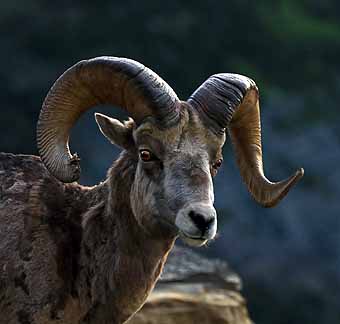 |
|
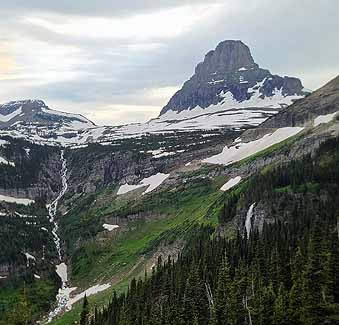 |
|
| |
Bighorn sheep |
|
Logan Peak |
|
| |
|
|
|
|
| |
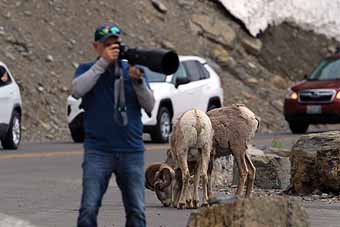 |
|
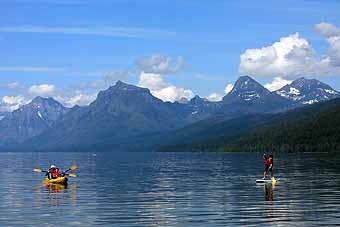 |
|
| |
Tourist and Bighorn sheep |
|
Lake McDonald |
|
Popular summer hikes in this area include Avalanche Lake (considered the busiest in our National Park system) and Hidden Lake near Logan Pass Visitor Center.
Steen and I made several stops en route to Logan Pass to soak in the grandeur. Favorites are McDonald Falls, Weeping Wall and several small turnouts. At Logan Pass, we were entertained by a large herd of Bighorn Sheep shedding their winter coats, frolicking on the snowfields and in the large parking lot. As with all wildlife, please give them plenty of space and do not approach them too closely. This is not a petting zoo. You are responsible for your own stupidity and hospital bills if you attempt to pet. Do not add to the circus of YouTube videos already out there.
| |
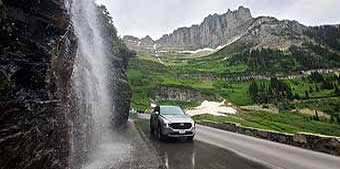 |
|
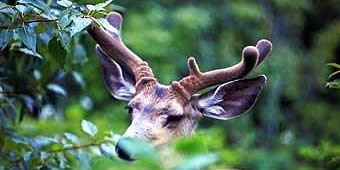 |
|
| |
Weeping Wall |
|
White-tail deer |
|
Two days later, I went up solo and was able to photograph Rocky Mountain goats along with a beautiful white-tail deer in full velvet. I also reveled in getting wet walking beneath the copious runoff at the Weeping Wall. Vehicles will often drive under the water cascades for a free car wash. I later set up my tripod for time exposures of the abundant waterfalls east of Logan Pass.
RED JAMMERS
| |
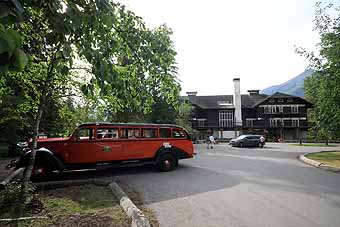 |
|
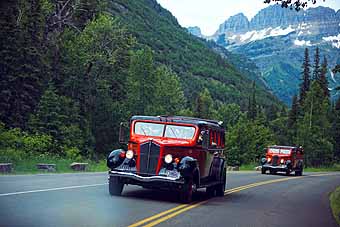 |
|
| |
Red Jammer and McDonald Lodge |
|
Red Jammers |
|
They are called red jammers and that is not referring to pajamas. A fleet of 33 red shuttle buses, carrying up to 17 passengers each, exist in Glacier National Park https://www.glaciernationalparklodges.com/red-bus-tours/west-side-tours/ . They are vintage buses that offer a variety of tours in the Park, costing around $100 and about $50 for children. It is a great way to experience the Park without having to drive. Though I have never traveled in one, it is on my bucket list.
| |
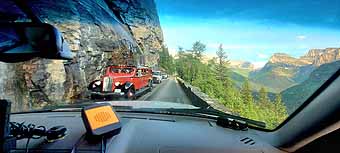 |
|
| |
Going-to-the-Sun Road Red Jammer |
|
RAFTING AND FLY FISHING FLATHEAD RIVER
| |
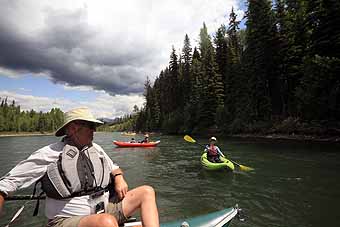 |
|
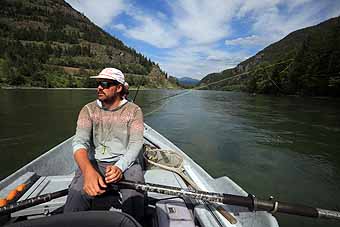 |
|
| |
Clay Burrows, Sara Tate on the North Fork |
|
Peter O'Hearne Flathead River |
|
My son, friend Peter O’Hearne, and I floated the Middle and main Forks of the Flathead River several times this spring and early summer, fly fishing for trout (mainly cutthroat and cut-bows, a rainbow and cutthroat combo). On two of the floats, we did not encounter one other boat. That changes dramatically in the summertime though. A Montana fishing guide, Peter can be booked at http://www.lakestream.com.
The Flathead is a freestone river with three forks, the south, middle and north. The North Fork begins in Canada, flowing south where it meets the Middle Fork at Blankenship. The South Fork arrives near Hungry Horse. Together they flow to the largest body of freshwater west of the Mississippi: Flathead Lake. All three forks and the main river are notable fisheries, especially for fly rod fishing. We caught fish on all of our outings. The scenery is wild and beautiful on all of the stretches. The generally clear water comes from the runoff of glaciers and snow-covered mountains of this rugged country.
| |
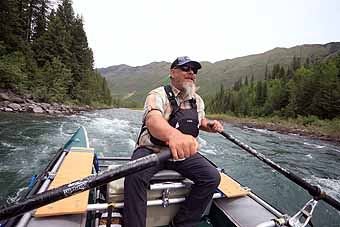 |
|
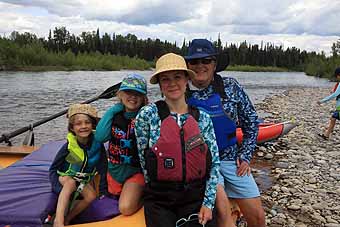 |
|
| |
Malcolm Goble North Fork Flathead River |
|
Mushel Tate Family taking a river lunch break |
|
| |
|
|
|
|
| |
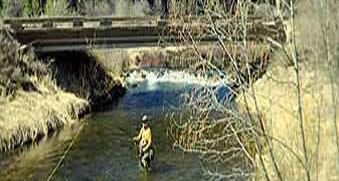 |
|
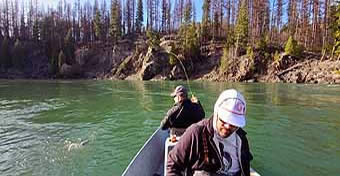 |
|
| |
Steen Montana stream fly fishing |
|
Steen Turner fighting a trout |
|
The day before Father’s Day this year, I rafted with friends from Polebridge to Big Creek. On Father’s Day, we rafted from Big Creek to our takeout at Glacier Point. We had two rafts and two kayaks on the Polebridge float and nary another raft did we see on the river that day which was a surprise to us. My raft was captained by lifelong Montanan Malcolm Goble. New friend Clay Burrows was a fellow passenger (his wife Kay would take his place on the second day). Malcolm and Clay regaled me with river and travel stories. Barrel chested and burly, Malcolm is the quintessential river rafter who would really come in handy in a barroom fight...although an unlikely occurance for him as he is a teetotaler. Clay is a retired IT guy who has traveled the world, including a recent trip to Antarctica. On slower stretches of the river, Malcolm would sometimes recite colorful and not so colorful river poetry, leaving us all in river stitches.
MOUNT RAINIER
| |
In the heart of spring, I took a Montana break and flew to Seattle where my cousin Laura picked me up, accompanied by our mutually shared and loved Boston terrier, Rosie. One day, I borrowed Laura’s car and Rosie and headed to Mount Rainier from her Tenino home. It was a bluebird spring day. Taking back roads, we drove through the charming towns of Rainier and Yelm, eventually threading our way to Eatonville, Elbe and Ashford, all gateways to Rainier National Park. We ate lunch in Eatonville and strolled around their main city park. I had a turkey sandwich, Rosie a few milk bones, liver treats and part of my sandwich. Between Yelm and Eatonville, there are some grand views of the large volcano if you know where to go and look. I’m not bashful so I always ask the locals for such advice. A roadside church on this route has a stellar view. Downtown Eatonville is not too shabby. Orange poppies and Persian lilacs were blooming along with a flotilla of other flowers, making for some nice foregrounds. Rosie and I went into the Park at the Nisqually Entrance (the far southwest corner) and we drove only to the Kautz Creek Trail, turned around, drove back a few miles where we accessed the seldom-traveled Westside Road, and drove all the way to its end. We saw only one vehicle. The lush forest was alive with cascading brooks, larger-than-human ferns, picturesque Tahoma Creek and solitude. |
|
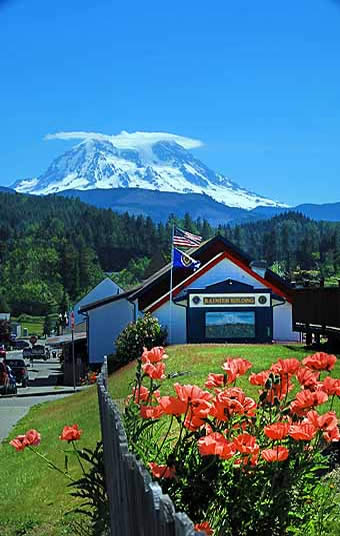 |
|
| |
|
|
Mount Rainier View from Eatonville |
|
| |
|
|
|
|
| |
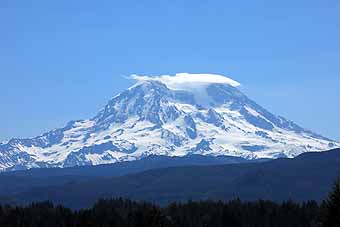 |
|
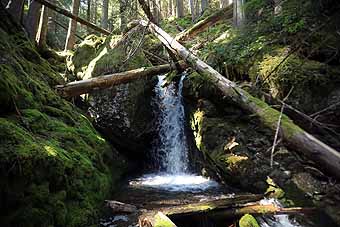 |
|
| |
Mount Rainier |
|
Rainier NP Cascade |
|
OCEAN SHORES
I love exploring maps. One day when caring for Rosie, I broke out the Washington Atlas and Gazetteer and started exploring the Evergreen State’s coastal region. It had been over a year since I had been to the ocean. The sea was calling. Two weekends in a row—when the inland temps got hot—we spent at Ocean Shores, staying at the dog friendly Canterbury Inn (http://www.canterburyinn.com). After the first week in June, room rates jump skyward at all places along the Washington Coast. I recommend staying Sunday and Monday nights for the best room deals.
| |
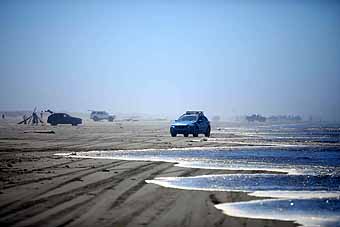 |
|
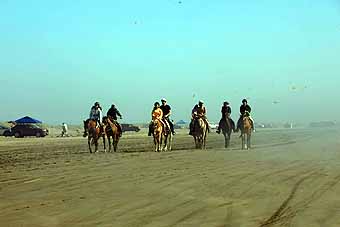 |
|
| |
Beach driving Ocean Shores |
|
Horseback riding Ocean Shores |
|
| |
|
|
|
|
| |
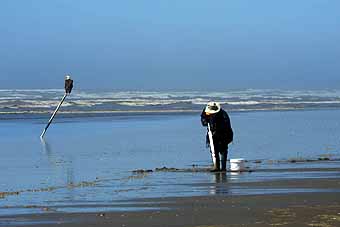 |
|
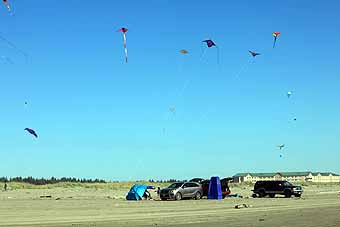 |
|
| |
Clamming under watchful bald eagle eye |
|
Ocean Shores kite flying |
|
At Ocean Shores, you can drive on the beach which makes for a memorable experience. We found secluded places, put out the lawn chairs, took many walks as Rosie had the time of her life playing in the surf and exalting in her new playground.
On our first departure weekend day, we drove on the beach up to Copalis Beach where we took Highway 109 north to Pacific Beach, Moclips, and eventually to Taholah where the road terminates at Quinault River. Taholah is the headquarters for the Quinault Indian Nation.
All new roads in my life were traveled that day. Beautiful country and I loved every single second of it. Rosie concurred with a ruff-ruff.
| |
 |
|
.jpg) |
|
| |
Rosie running Ocean Shores beach... |
|
...and again |
|
| |
|
|
|
|
| |
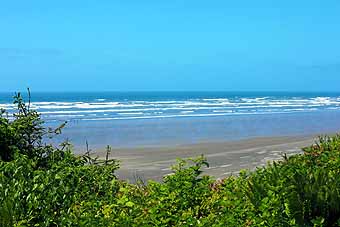 |
|
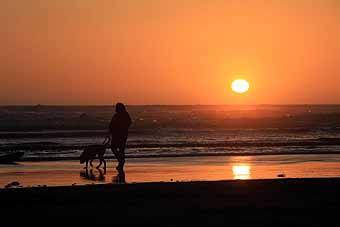 |
|
| |
Washington coastline near Pacific City |
|
Ocean Shores sunset |
|
Important Info: http://www.tourismoceanshores.com
http://www.nps.gov/mora
ABOUT THE AUTHOR
| |
Larry Turner is a productive, respected regional, national and international photographer/writer. His work has appeared in countless magazines and books, including Browntrout and Avalanche Publishers' calendars and books, American Heritage, National Geographic Traveler, Travel and Leisure, Sunset and many others. He is the co-author of the book Mount Shasta Reflections, and his photographs have appeared on covers of many books and magazines. He is an active skier, gardener, fly fisherman, and adventurer. His greatest love is spending time with his son Steen, Chef de Cuisine of the Cafe Kandahar in Whitefish, Montana. Click for Larry's Facebook page. |
|
 |
|
|
|
|
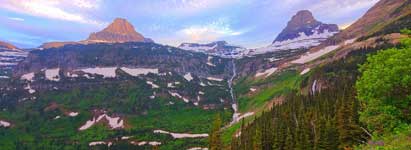




























.jpg)


